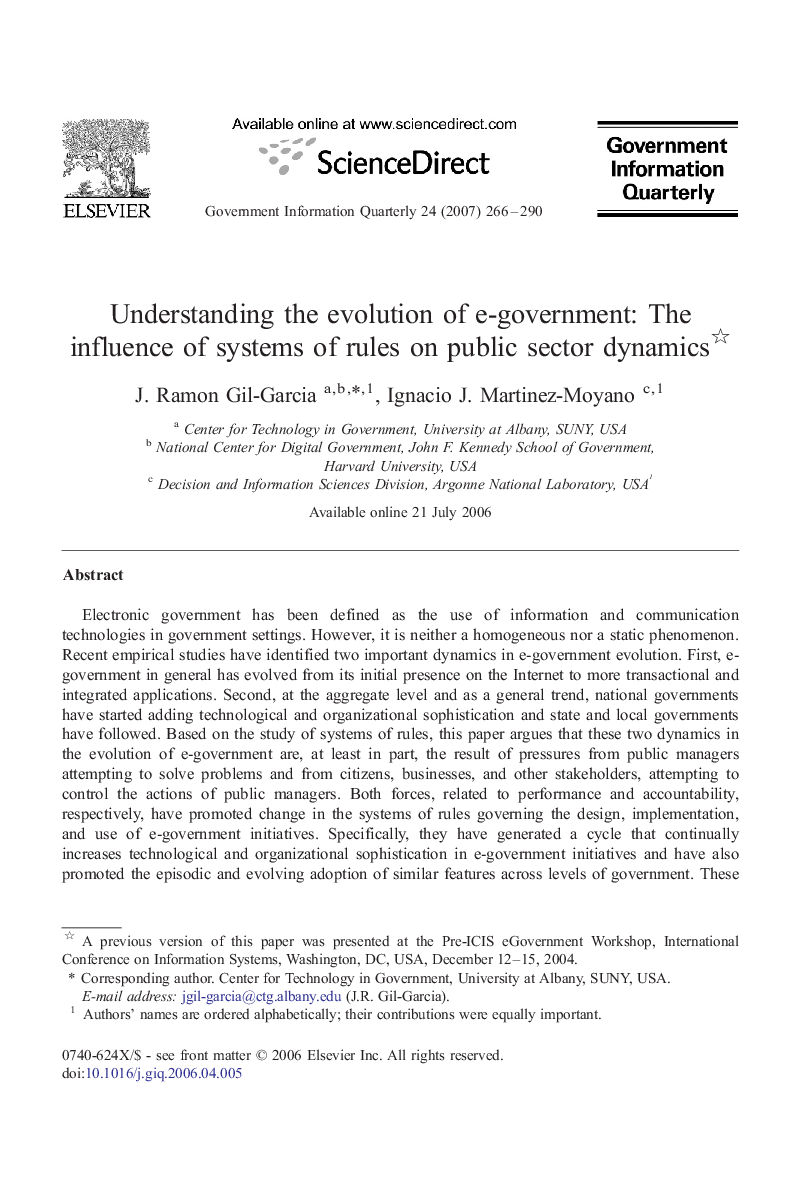| Article ID | Journal | Published Year | Pages | File Type |
|---|---|---|---|---|
| 1025058 | Government Information Quarterly | 2007 | 25 Pages |
Electronic government has been defined as the use of information and communication technologies in government settings. However, it is neither a homogeneous nor a static phenomenon. Recent empirical studies have identified two important dynamics in e-government evolution. First, e-government in general has evolved from its initial presence on the Internet to more transactional and integrated applications. Second, at the aggregate level and as a general trend, national governments have started adding technological and organizational sophistication and state and local governments have followed. Based on the study of systems of rules, this paper argues that these two dynamics in the evolution of e-government are, at least in part, the result of pressures from public managers attempting to solve problems and from citizens, businesses, and other stakeholders, attempting to control the actions of public managers. Both forces, related to performance and accountability, respectively, have promoted change in the systems of rules governing the design, implementation, and use of e-government initiatives. Specifically, they have generated a cycle that continually increases technological and organizational sophistication in e-government initiatives and have also promoted the episodic and evolving adoption of similar features across levels of government. These two related evolutionary dynamics and the characterization of e-government as systems of rules and standards have some important policy implications, which are briefly discussed at the end of the paper.
